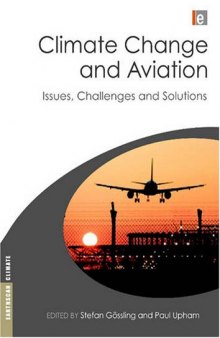 جزییات کتاب
جزییات کتاب
'This is a timely, challenging and fascinating book on a topic of central importance to the success or otherwise of our climate change policies. It sets down a clear marker for what has to be done in the aviation sector.' Professor John Whitelegg, Stockholm Environment Institute, University of York, UK 'Climate Change and Aviation presents a clear picture of the transport sector's greatest challenge: how to reconcile aviation's immense popularity with its considerable environmental damage and its dependence on liquid hydrocarbon energy sources. This book avoids wishful thinking and takes the much harder, but more productive, path of considering difficult solutions that clash with short-term and short-sighted expectations about the unlimited growth potential for flying.' Professor Anthony Perl, Urban Studies Program, Simon Fraser University, Canada 'A convincing and timely collection that brings together an impressive range of expertise. The book integrates various perspectives into a powerful core argument - we must do something, and quickly, to tackle the impact of aviation on our environment. The authors recognise the political difficulties associated with promoting change but present constructive options for policy makers. Required reading, especially for transport ministers set on promoting the growth of air travel.' Professor Jon Shaw, Director of the Centre for Sustainable Transport, University of Plymouth, UK Trends such as the massive growth in availability of air travel and air freight are among those which have led to aviation becoming one of the fastest growing emitters of greenhouse gases. These trends have also caused a shift in expectations of how we do business, where we go on holiday, and what food and goods we can buy. For these reasons aviation is (and is set to stay) high up on global political, organizational and media agendas. This textbook is the first to attempt a comprehensive review of the topic, bringing together an international team of leading scientists. Starting with the science of the environmental issues, it moves on to cover drivers and trends of growth, socio-economics and politics, as well as mitigation options, the result being a broad yet detailed examination of the field. This is essential reading for undergraduate and postgraduate courses in transport, tourism, the environment, geography and beyond, while also being a valuable resource for professionals and policymakers seeking a clear understanding of this complex yet urgently pressing issue.



 دانلود کتاب
دانلود کتاب

 جزییات کتاب
جزییات کتاب





 این کتاب رو مطالعه کردید؟ نظر شما چیست؟
این کتاب رو مطالعه کردید؟ نظر شما چیست؟
